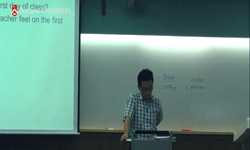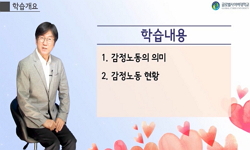This study aimed to examine emotional modality and the semantic domains of emotional modality in the final ending of the fused form “-go ha” in the Korean language. The study presents an emotional modality educational approach to Korean language e...
http://chineseinput.net/에서 pinyin(병음)방식으로 중국어를 변환할 수 있습니다.
변환된 중국어를 복사하여 사용하시면 됩니다.
- 中文 을 입력하시려면 zhongwen을 입력하시고 space를누르시면됩니다.
- 北京 을 입력하시려면 beijing을 입력하시고 space를 누르시면 됩니다.

한국어 교육을 위한 감정 양태 연구 = A Study on the Emotional Modality forTeaching Korean as a Foreign Language
한글로보기https://www.riss.kr/link?id=A108731775
-
저자
손유정 (한국외국어대학교)

- 발행기관
- 학술지명
- 권호사항
-
발행연도
2023
-
작성언어
Korean
-
주제어
양태 ; 담화 ; 감정 ; 융합형 종결어미 ; 감정양태 ; 담화 분석 ; 감정양태 교육 ; modality ; discoures ; emotion ; the final ending of the fused form ; emotional modality ; discourse analysis ; education of emotional modality
-
등재정보
KCI등재,ESCI
-
자료형태
학술저널
-
수록면
29-63(35쪽)
- 제공처
-
0
상세조회 -
0
다운로드
부가정보
다국어 초록 (Multilingual Abstract)
This study aimed to examine emotional modality and the semantic domains of emotional modality in the final ending of the fused form “-go ha” in the Korean language. The study presents an emotional modality educational approach to Korean language education. A discourse context is needed for practical Korean spoken language education, and investigating corpus data with a discourse context is necessary to understand the language forms that express emotional modality under specific situations. Therefore, the study analyzes emotional modality appearing at the end of the fused “-go-ha-“ type through discourse analysis, by examining “-dago, -dani, -damyenseo, -danikka,” the declarative, interrogative, imperative, and conjugated forms of request types.
The corpora materials used in the discourse analysis include approximately 15,500,722 phrases from the scripts of 210 TV drama episodes and 415,739 phrases from 30 movies. The results show the speakers' various sub-semantic areas of positive and negative emotions. In the Korean spoken language, the final ending of the fused form of ‘-go ha-’ appears with a high frequency as a language form chosen to express the speaker's emotions. Teaching the Korean language by incorporating it into various discourse situations as a grammar item is necessary for practical Korean spoken language education.
동일학술지(권/호) 다른 논문
-
외국어로서의 한국어 통번역 교육 목표 및 교육 내용 연구
- 국제한국언어문화학회
- 허은혜
- 2023
- KCI등재,ESCI
-
- 국제한국언어문화학회
- 김민영
- 2023
- KCI등재,ESCI
-
초급 한국어 말하기 앱 개발 연구 -D대학 교육과정을 중심으로-
- 국제한국언어문화학회
- 최은경
- 2023
- KCI등재,ESCI
-
중국인 학습자를 위한 한국 가치문화 교육 방안 연구 -불확실성 회피 문화를 중심으로-
- 국제한국언어문화학회
- 지립군
- 2023
- KCI등재,ESCI




 KCI
KCI 스콜라
스콜라






